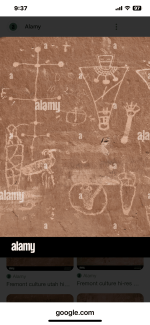WestCoastDan
Newbie
- Nov 9, 2024
- 2
- 1
New member, big fan of the show…
I just happened to watch a show tonight that showed the Fremont petroglyphs in Utah… and I think they may share an interesting coincidence.
There appears to be an ancient carving in Utah that resembles the TOL & Nolan’s Cross.
Related? You decide…
I just happened to watch a show tonight that showed the Fremont petroglyphs in Utah… and I think they may share an interesting coincidence.
There appears to be an ancient carving in Utah that resembles the TOL & Nolan’s Cross.
Related? You decide…








